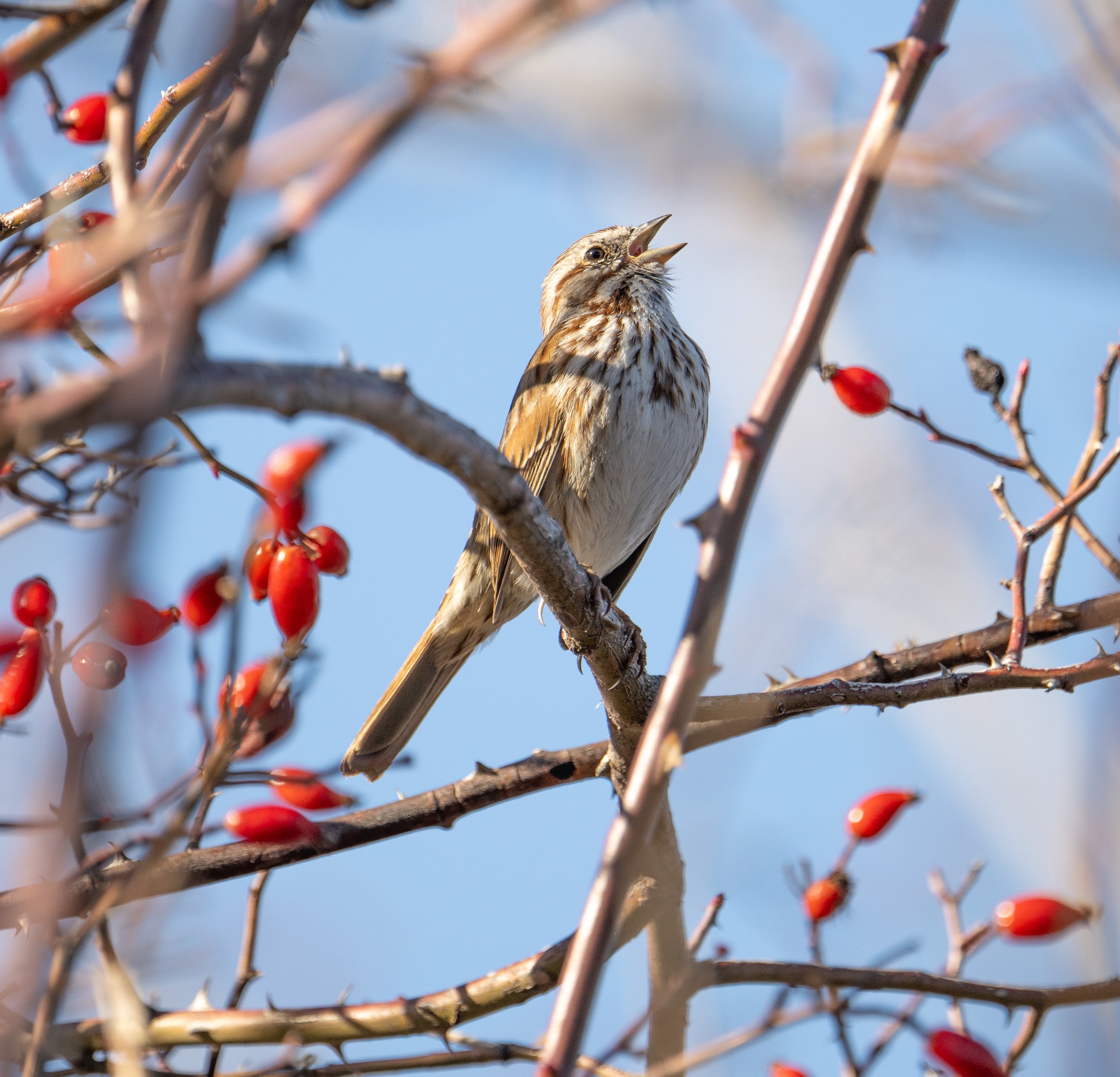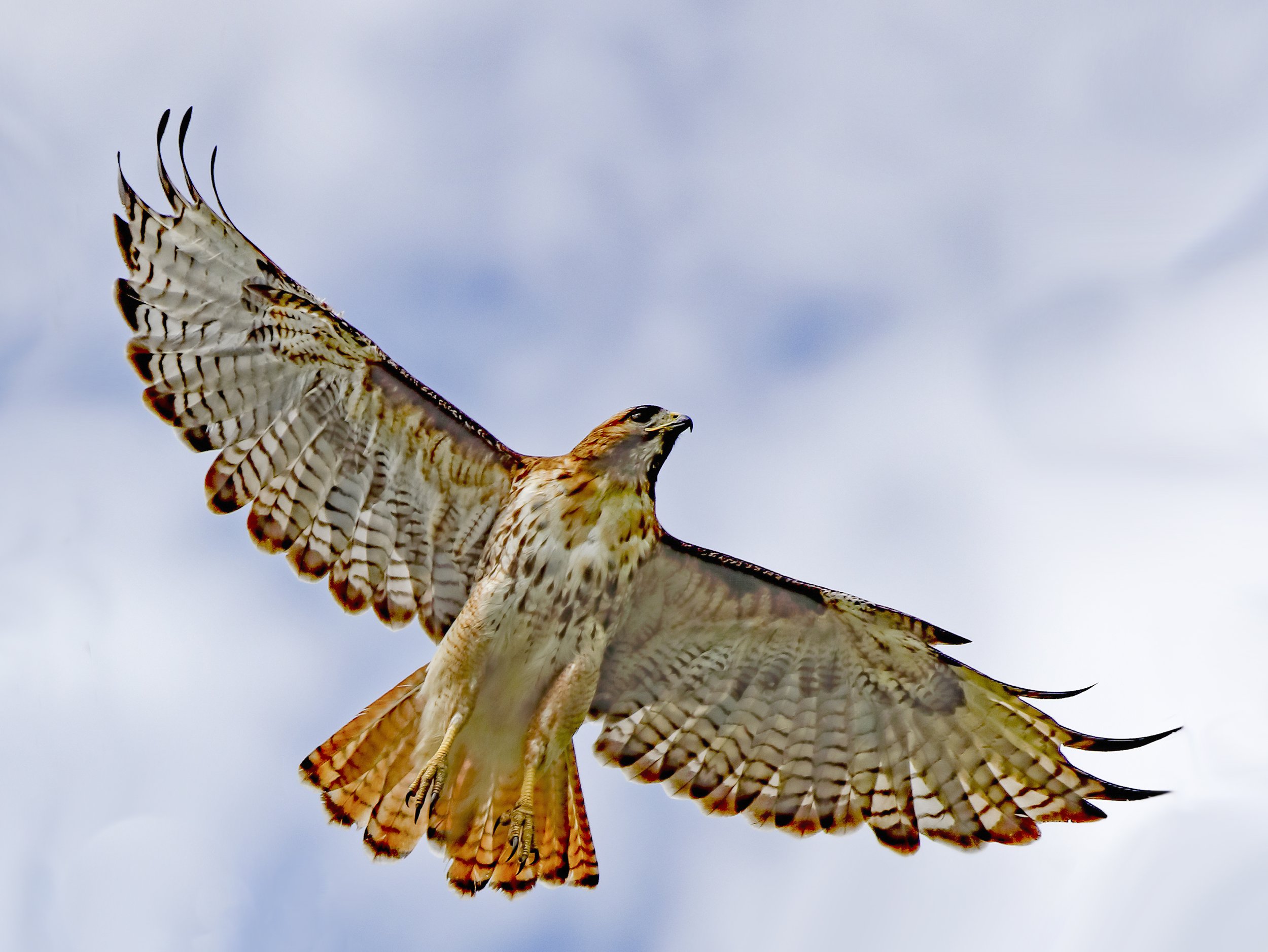Signs of Spring!
By Terry Rich, Golden Eagle Guest Blogger
Days started getting longer on December 23, which means Spring was on its way before Christmas. That’s kind of weird when you think about it. I always pay attention to the birds around that time to see which ones will signal the coming of Spring before they shy from the fireworks of New Year’s Eve.
Black-capped Chickadee – The first sign of spring again this year was an uptick in Black-capped Chickadees singing their “spring time” or “May Day” song. They will occasionally sing this song any time of the year. But it typically drops off greatly after nesting and then stays at a low level until the days start to lengthen.
This song advertises territories and seeks to attract mates. The song is simple but contains information identifying both the species and the individual. This is probably true of all bird songs. Most other species of chickadees have an analogous song, although they may have more than two notes, occur on different frequencies, or both.
Red-winged Blackbird – The next sign I picked up this spring was Red-winged Blackbird males singing their full songs from a cattail marsh in Hulls Gulch. Red-wings are notorious for getting their breeding season going early. It didn’t matter that their marshy nesting spots were underlain by a frozen pond covered with snow. They know very well their nesting territories will be good ones soon enough, and they have to get there early, or another red-wing will.
Bewick’s Wren – This wren also will sing a little at any time of the year, but recently they’ve cranked it up. I’ve heard as many as four singing in a relatively small area at Eagle Island State Park. As with Red-winged Blackbirds, only male Bewick’s Wrens sing, so we know four singers = four males.
American Robin – American Robins have not been nearly as common this winter as last. But they are notoriously variable from winter to winter, so I never worry about low robin numbers. Robins started singing conspicuously about four weeks ago.
Red-winged Blackbird by Krista Helmstadter
Hooded Mergansers displaying by Ken Miracle
Hooded Merganser – This is one of the most spectacular ducks on the planet. While the males are awesome looking any time, they really kick it up a notch when they begin displaying in competition for females. They expand the white feathers on their heads to create large, nearly circular patches, surrounded by black. During their displays, they shake their heads and rock forward and back like a rocking horse. They have greatly increased these displays over just the last few weeks.
Song Sparrow – Next for me were Song Sparrows. This is one of the most common resident bird species in southern Idaho, although due to their skulky habits they are probably overlooked by many people. They, too, will sing any time of the year, if only rarely in winter. But since mid-January, their song production has obviously increased. They have also started responding to each other. This is clearly the start of each male bird enhancing its own territory for the pending nesting season.
Red-tailed Hawk – Another sign of spring is when Red-tailed Hawks start to revisit old nests. I know of one nest in the foothills that has been used for many years. This year, both birds were nearby on January 25, for the first time this winter. A week later, I saw a red-tail in Hulls Gulch hauling a stick to its nest somewhere near Camel’s Back Park.
Dark-eyed Junco – The most common feeder bird in Idaho year after year – the Dark-eyed Junco – has begun to sing. Their simple trill is nothing special in the world of bird song. But it works just fine in junco land.
In my classes on bird song, I like to compare the trill of the junco to the similar trill of the Chipping Sparrow. Chippies aren’t here yet, so there’s no danger in confusing the species right now. But during the nesting season, at Bogus Basin for example, you can hear both species right next to each other. Junco trills are higher and slightly more metallic. Chipping sparrow trills are drier and more wooden.
Northern Flicker – Another species that has started singing is the Northern Flicker. “Singing” is a generous word for what they do. Birds of the World calls this a “long call,” a repetitive series of loud notes that aid in pair formation and territory defense. The call we hear year-round is a single sharp note, called the “peah” call. The long call is given with a lot of vigor. Combined with the flicker’s preference for perching high in trees, the call can carry for many blocks.
Another flicker call that increases in spring is the “wicka” call. This call is given in a string, usually by two or more birds close to each other and may be accompanied by various wing displays and posturing. This call isn’t as loud as the long call, and it is also given at other times of the year during social interactions. So, by itself it’s not a sure sign of spring, but the increased frequency of use is.
American Kestrel – In eBird, one of the options you have after entering a count of some species is to “add a breeding code.” These include things like “singing male,” “carrying food,” and “nest with young.” The code gives some idea of whether or not the species is breeding. The 23 codes go from possible – singing male – to confirmed – nest with young.
One of the codes in the category of “probable” is C – Courtship, Display or Copulation. I recently witnessed that last behavior in American Kestrels. It’s amazing to me that despite the simple fact that all birds must copulate to produce young, we don’t see it very often. In birds, this is a very brief episode, so it is easy to miss. Note that this behavior is not a “confirmed” sign of breeding. There is a long way to go before we have “nest with young” or “feeding young.”
American Kestrels by Jim Shane
Northern Harrier – In the same eBird category of breeding code we also find “display.” I’m guessing that all species of birds have some sort of display, in addition to singing or other vocals. In the last week, I have seen two different male Northern Harriers do a flight display called a “sky dance.”
In this display, a male flies in a straight line, often down a ridge, and does a series of loop-de-loops. I’ve seen as many as 10-12 consecutive aerial somersaults. One bird I saw recently only did one loop – over Chickadee Ridge in Hulls Gulch. The second bird didn’t quite get the full roll in, but just peaked over and over like a surfer working his way out across incoming waves. That bird was displaying over houses on the edge of Barber Park – the first time I’ve ever seen that.
Downy Woodpecker by Ken Miracle
Downy Woodpecker – Downy Woodpeckers most often give a simple, sharp “peek!” call any time of the year. They have another call, used much less often, which is described as the “whinny” call. I guess it reminded some early ornithologist of a horse whinnying. The structure of the call is similar, although the much higher frequency might challenge your ability to see the two as much alike. Whinny calls are given year-round, but they increase in spring when males are nest building.
I love winter, and I love snow, but I know that’s not true for everyone. For those looking forward to ever longer days and warmer temperatures, the birds are leading the way. Watch and listen!
You can reach Terry at terryrichbrd@gmail.com.





